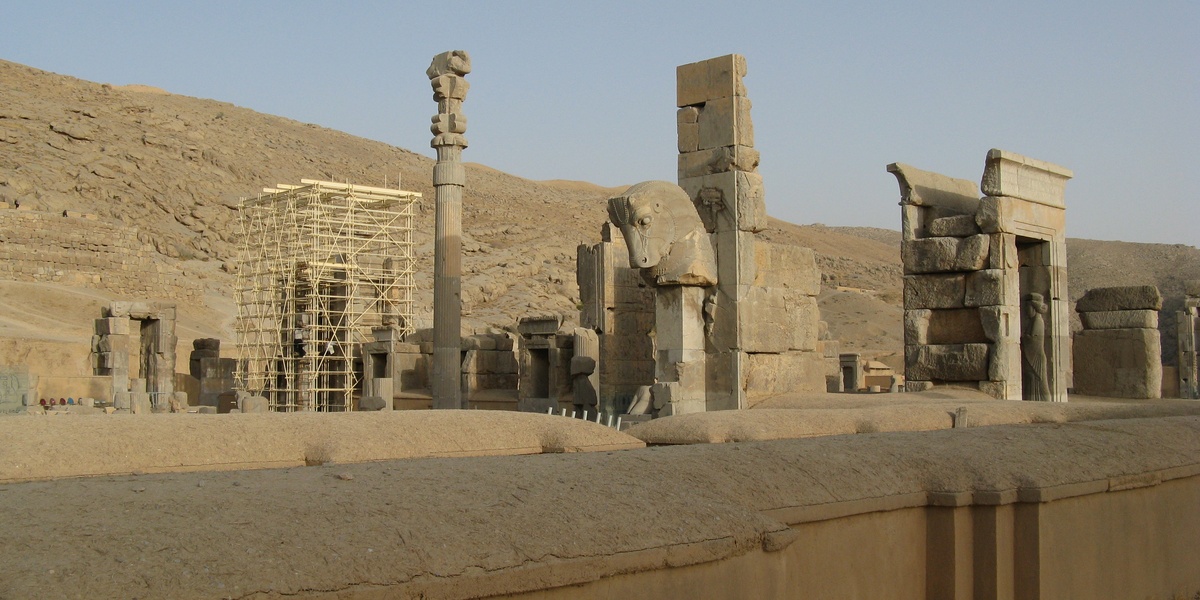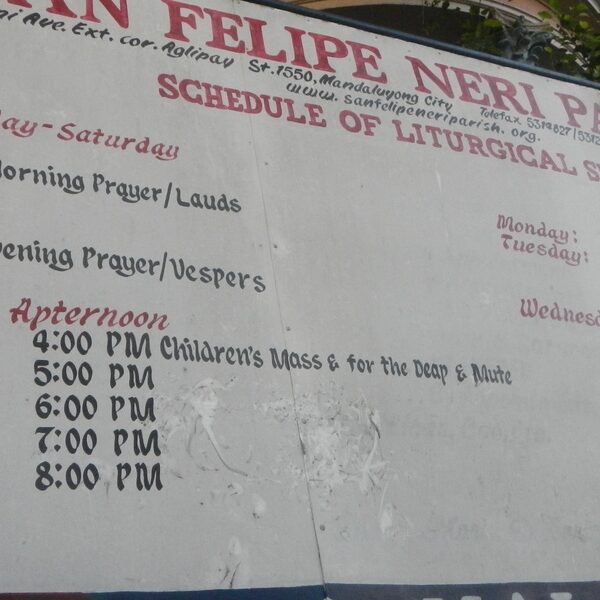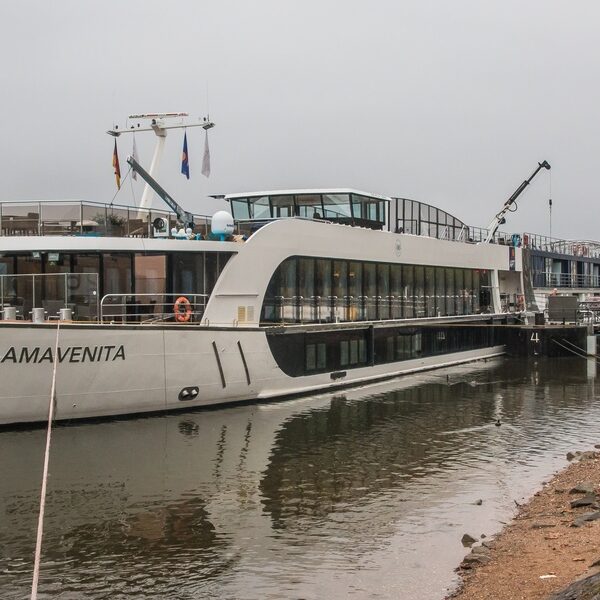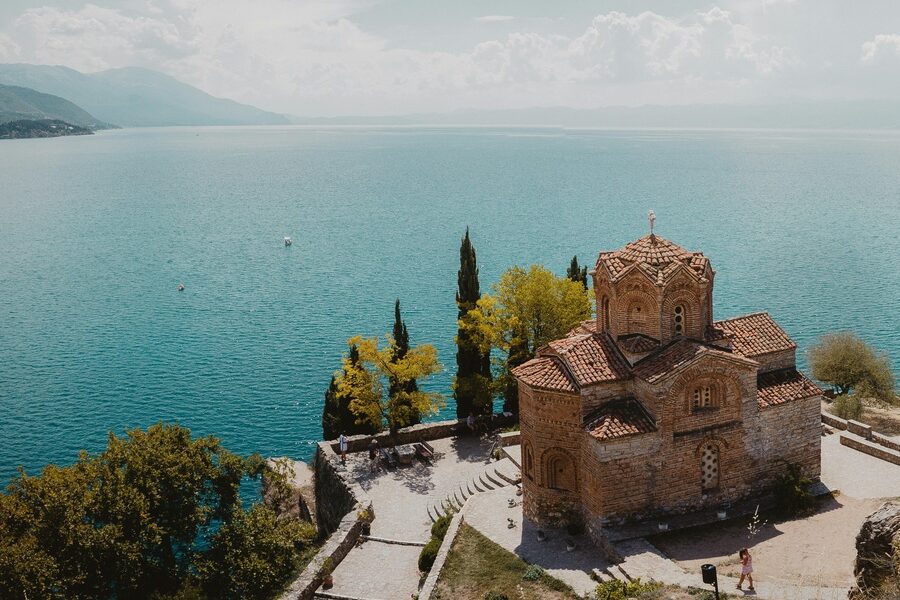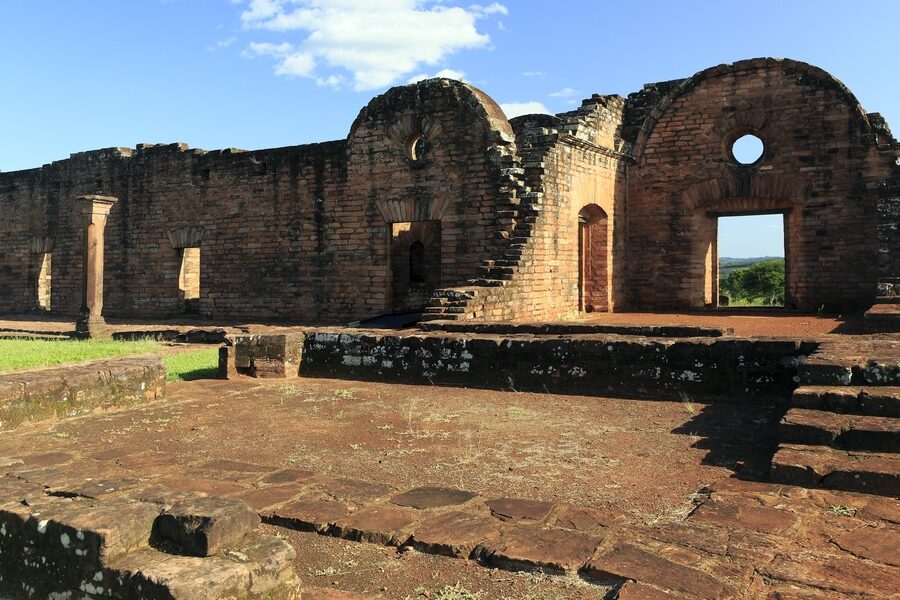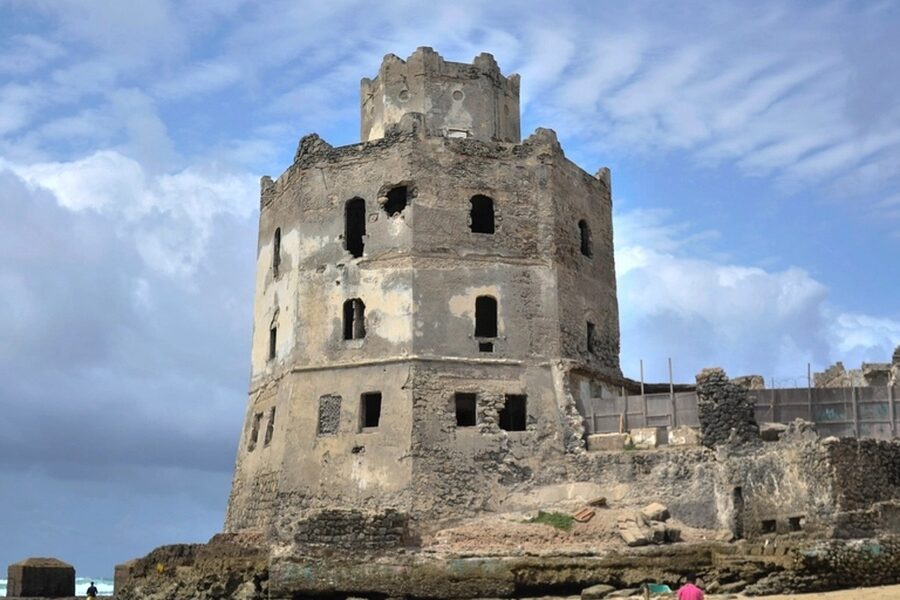Iran’s landscape holds layers of history where caravan routes, mountain fortresses and buried cities mark centuries of change. Walking among stone foundations and ruined walls in different provinces gives a sense of how empires, trade and local life shaped the region over millennia.
There are 49 Ruins in Iran, ranging from Alamut Castle to Zahhak Castle. For each site, Location,Period,Status are listed to show where it sits, its historical period and its current condition — you’ll find below.
How should I plan a trip to see multiple ruins across Iran?
Group sites by region rather than trying to cross the country in one go: many ruins cluster near provincial centers or tourist circuits. Check seasonal weather, local transport options, and opening times; hire local guides when recommended, and allow extra time for unpaved roads and unexpected closures.
Do any of these sites require special permits or local permissions?
Most major ruins are open to visitors, but some remote or protected sites need permits, permissions from local authorities, or accompaniment by an accredited guide. Always verify access rules with local tourist offices or heritage agencies before you go, and respect conservation and photography restrictions.
Ruins in Iran
| Name | Location | Period | Status |
|---|---|---|---|
| Persepolis (Takht-e Jamshid) | Fars; near Shiraz; 29.93, 52.89 | Achaemenid (c. 515 BCE) | Ruined but well-preserved. Major tourist site. UNESCO World Heritage Site. |
| Chogha Zanbil | Khuzestan; near Susa; 32.01, 48.52 | Elamite (c. 1250 BCE) | Well-preserved mud-brick ziggurat. Accessible. UNESCO World Heritage Site. |
| Pasargadae | Fars; near Saadat Shahr; 30.19, 53.18 | Achaemenid (c. 546 BCE) | Sprawling ruins, including the Tomb of Cyrus. UNESCO World Heritage Site. |
| Naqsh-e Rustam | Fars; near Persepolis; 29.99, 52.87 | Achaemenid & Sassanian | Easily accessible rock-face tombs and reliefs. A major historical site. |
| Bam Citadel (Arg-e Bam) | Kerman; Bam; 29.12, 58.37 | Parthian, developed until 19th c. CE | Severely damaged by 2003 earthquake; extensive restoration ongoing. UNESCO World Heritage Site. |
| Takht-e Soleyman | West Azerbaijan; near Takab; 36.60, 47.23 | Sassanian | Partially restored ruins around a volcanic lake. UNESCO World Heritage Site. |
| Bisotun (Bisitun) | Kermanshah; near Bisotun; 34.39, 47.43 | Achaemenid & later | Mountain-face inscription, viewable from the road. UNESCO World Heritage Site. |
| Susa (Shush) | Khuzestan; Shush; 32.19, 48.24 | Elamite to Islamic | Extensive archaeological mound with visible foundations. UNESCO World Heritage Site. |
| Bishapur | Fars; near Kazerun; 29.78, 51.58 | Sassanian (c. 266 CE) | Extensive city ruins and rock reliefs in a nearby gorge. Easily accessible. |
| Soltaniyeh | Zanjan; Soltaniyeh; 36.43, 48.79 | Ilkhanate (c. 1302 CE) | Massive dome is restored; surrounding old city is in ruins. UNESCO World Heritage Site. |
| Shahr-e Sukhteh (Burnt City) | Sistan and Baluchestan; near Zabol; 30.59, 61.33 | Bronze Age (c. 3200-1800 BCE) | Vast, arid archaeological site. Museum on site. UNESCO World Heritage Site. |
| Ecbatana (Hegmataneh) | Hamadan; Hamadan; 34.80, 48.51 | Median & Achaemenid | Excavated urban area in the center of modern Hamadan. On-site museum. |
| Alamut Castle | Qazvin; near Gazor Khan; 36.44, 50.59 | Buyid & Nizari Ismaili (11th-13th c. CE) | Mountain-top ruin. Requires a steep hike to access. Ongoing archaeological work. |
| Palace of Ardashir | Fars; near Firuzabad; 28.90, 52.54 | Sassanian (c. 224 CE) | Substantial, well-preserved palace ruins with domes and iwans. Accessible. |
| Rudkhan Castle | Gilan; near Fuman; 37.06, 49.24 | Seljuk & later | Largely intact walls and towers in a dense forest. Requires long stair climb. |
| Tepe Sialk | Isfahan; Kashan; 33.97, 51.40 | Prehistoric (c. 6000 BCE) | Two excavated mounds with protective roofing. Small on-site museum. |
| Izadkhast Castle | Fars; Izadkhast; 31.52, 52.12 | Sassanian & Islamic | Ruined fortified town and caravanserai. Precarious access to some areas. |
| Taq-e Bostan | Kermanshah; Kermanshah; 34.39, 47.11 | Sassanian | Large rock reliefs carved into a cliffside. Public park setting. |
| Kharanaq | Yazd; near Ardakan; 32.33, 54.66 | Sassanian & Islamic | Abandoned mud-brick village. Accessible for exploration, but use caution. |
| Narin Castle, Meybod | Yazd; Meybod; 32.22, 54.01 | Pre-Islamic (Elamite or Median) | Large, imposing mud-brick castle ruin. Centrally located and accessible. |
| Qal’eh Dokhtar (The Maiden’s Castle) | Fars; near Firuzabad; 28.92, 52.53 | Sassanian (c. 209 CE) | Mountain-top fortress ruins. A steep but rewarding hike to access. |
| Sarvestan Palace | Fars; Sarvestan; 29.27, 53.22 | Sassanian (5th c. CE) | Restored stone palace with domes and iwans. Accessible. |
| Haft Tepeh | Khuzestan; near Susa; 32.08, 48.33 | Elamite (c. 1500 BCE) | Excavated tomb complex and foundations. On-site museum with cuneiform tablets. |
| Shahr-e Qumis (Hecatompylos) | Semnan; near Damghan; 36.14, 54.12 | Parthian | Sprawling, low-lying mounds in a desert landscape. Requires guide. |
| Towers of Silence, Yazd | Yazd; Yazd; 31.85, 54.35 | Zoroastrian (until 20th c. CE) | Two hilltop circular structures. Easily accessible via trail. |
| Rab’-e Rashidi | East Azerbaijan; Tabriz; 38.08, 46.34 | Ilkhanate (13th-14th c. CE) | Stone foundations of a large complex. Undergoing excavation and preservation. |
| Babak Castle | East Azerbaijan; near Kaleybar; 38.87, 47.05 | Sassanian & Islamic (9th c. CE) | Remote mountaintop fortress ruin. Requires a very strenuous multi-hour hike. |
| Harireh Ancient City | Hormozgan; Kish Island; 26.56, 53.99 | Islamic (c. 10th-15th c. CE) | Excavated foundations of houses, baths, and a mosque. Easily accessible. |
| Temple of Anahita, Kangavar | Kermanshah; Kangavar; 34.50, 47.96 | Seleucid or Parthian | Massive stone platform and column bases. Located in the center of town. |
| Rayen Castle | Kerman; Rayen; 29.59, 57.44 | Sassanian & Islamic | Well-preserved mud-brick citadel. Smaller, less crowded version of Arg-e Bam. |
| Kuh-e Khwajeh | Sistan and Baluchestan; near Zabol; 30.70, 61.23 | Parthian & Sassanian | Ruins on a flat-topped basalt hill in a lake. Access depends on water levels. |
| Darabgerd | Fars; near Darab; 28.72, 54.46 | Sassanian & Achaemenid | Massive circular earthwork ramparts and a central rock feature. |
| Estakhr | Fars; near Marvdasht; 30.01, 52.91 | Achaemenid to Islamic | Sprawling but sparse ruins of a major city. Accessible but undeveloped. |
| Jundi-Shapur | Khuzestan; near Dezful; 32.28, 48.51 | Sassanian (3rd c. CE) | Extensive but low-lying mounds and city ruins. Requires a knowledgeable guide. |
| Siraf | Bushehr; near Taheri Port; 27.66, 52.34 | Sassanian & Islamic | Extensive ruins of a port city along the coast. Accessible. |
| Godin Tepe | Kermanshah; near Kangavar; 34.51, 48.06 | Prehistoric (c. 5000-500 BCE) | Archaeological mound. Site of important academic research. |
| Hasanlu Tepe | West Azerbaijan; near Naghadeh; 37.00, 45.46 | Iron Age | Large archaeological mound. Key artifacts are now in museums. |
| Shushtar Historical Hydraulic System | Khuzestan; Shushtar; 32.05, 48.85 | Elamite to Sassanian | A complex of mills, bridges, dams, and canals. UNESCO World Heritage Site. |
| Khorheh Temple | Markazi; near Khorheh; 34.19, 50.41 | Seleucid or Parthian | Two standing stone columns and foundations. Fenced site in a rural area. |
| Karaftu Caves | Kurdistan; near Divandarreh; 36.27, 46.85 | Seleucid or Parthian | Natural cave system with man-made chambers and inscriptions. Requires some climbing. |
| Iraj Castle | Tehran; near Pishva; 35.26, 51.77 | Sassanian | Vast, rectangular mud-brick fortification walls. Easily viewable but undeveloped. |
| Bandian Fire Temple | North Khorasan; near Dargaz; 37.47, 59.18 | Sassanian | Excavated temple hall with stunning stucco reliefs. Housed in a protective structure. |
| Zahhak Castle | East Azerbaijan; near Hashtrud; 37.40, 47.16 | Parthian to Islamic | Remote castle ruins on a rocky outcrop. Difficult access, requires a guide. |
| Lambsar Castle | Qazvin; near Razmian; 36.56, 50.31 | Nizari Ismaili (12th c. CE) | Extensive but remote fortress ruins on a mountain. Requires a guide. |
| Gerdkooh Castle | Semnan; near Damghan; 36.21, 54.16 | Nizari Ismaili (11th-13th c. CE) | Fortress ruin on a conical mountain peak. Very difficult to access. |
| Farahabad Complex | Mazandaran; near Sari; 36.80, 53.11 | Safavid (17th c. CE) | Ruins of a palace, mosque, and bridge. Partially submerged at times. |
| Sirvan (Ancient City) | Ilam; Sirvan; 33.63, 46.80 | Sassanian | Extensive ruins of a Sassanian city. Active archaeological site. |
| Ghal’eh Paeen Shahr, Birjand | South Khorasan; Birjand; 32.86, 59.22 | Safavid | Large, heavily ruined adobe citadel in the city. Easily accessible. |
| Bard-e Neshandeh | Khuzestan; near Izeh; 31.89, 49.72 | Achaemenid & Parthian | Open-air sanctuary ruins with altars and foundations. Rural, requires local guidance. |
Images and Descriptions
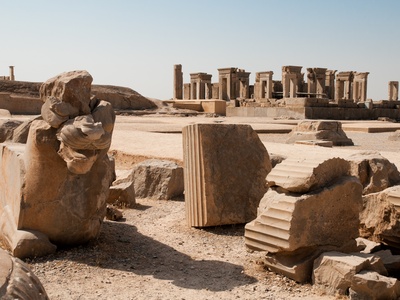
Persepolis (Takht-e Jamshid)
The stunning ceremonial capital of the Achaemenid Empire, famed for its grand palaces and intricate stone reliefs. It was famously sacked by Alexander the Great, but its majestic ruins still testify to the empire’s power and artistry.
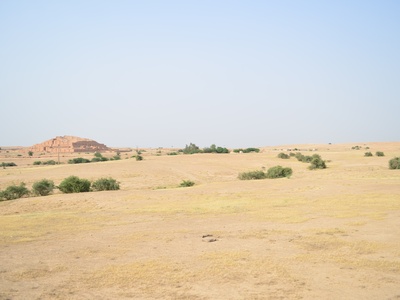
Chogha Zanbil
An ancient Elamite complex featuring one of the world’s best-preserved ziggurats. This massive stepped pyramid, dedicated to the god Inshushinak, is an extraordinary example of ancient Mesopotamian architecture and religious devotion.
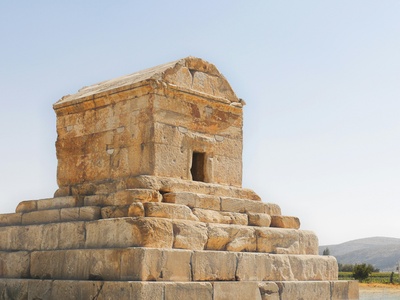
Pasargadae
The first capital of the Achaemenid Empire, founded by Cyrus the Great. The site includes his remarkably simple and profound tomb, palace ruins, and the sacred precinct, spread across a vast and serene plain.
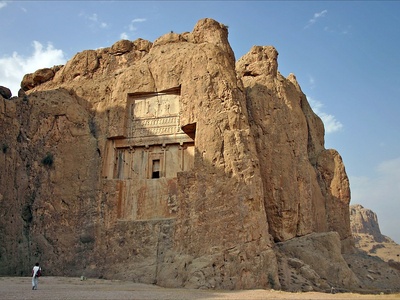
Naqsh-e Rustam
A breathtaking necropolis with four rock-cut tombs of Achaemenid kings, including Darius the Great. Below them, large Sassanian reliefs depict scenes of imperial triumph and investiture, creating a gallery of ancient Persian power.
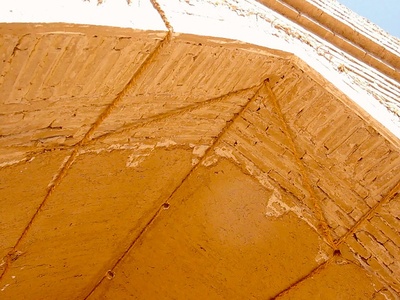
Bam Citadel (Arg-e Bam)
Once the world’s largest adobe building, this citadel was a fortified city on the Silk Road. Its mud-brick walls, towers, and streets are being painstakingly restored, showcasing millennia of desert architecture and history.
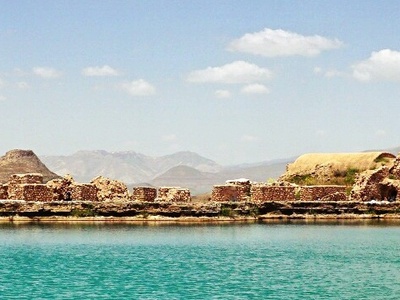
Takht-e Soleyman
A magical Zoroastrian sanctuary built around a deep artesian lake. The Sassanian complex includes the remains of a fire temple, a palace, and a massive stone wall, blending natural wonder with spiritual history.
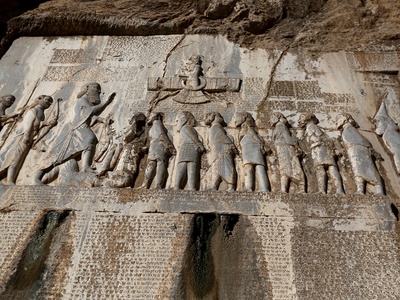
Bisotun (Bisitun)
Home to the monumental relief and inscription of Darius the Great, which was the key to deciphering cuneiform script. This multilingual text details his rise to power, carved into a limestone cliff along an ancient highway.
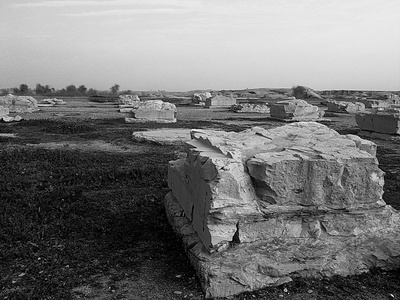
Susa (Shush)
One of the oldest cities in the world, serving as a capital for Elamites and Achaemenids. The sprawling ruins include the Apadana palace foundations, an acropolis, and remnants of millennia of urban life.
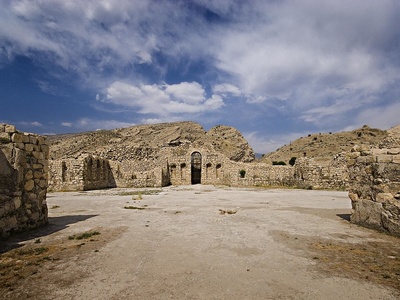
Bishapur
A Sassanian royal city founded by Shapur I. The ruins include a palace, a water temple dedicated to Anahita, and a hall decorated with stucco. Nearby reliefs celebrate Shapur’s victories over the Roman Empire.
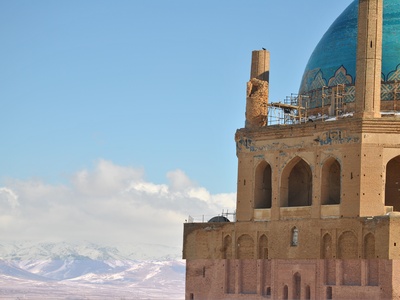
Soltaniyeh
The mausoleum of Öljaitü is a masterpiece of Persian-Islamic architecture with a huge turquoise dome. It stands amid the ruins of the vast capital city of the Ilkhanid Mongols, a testament to their grand ambitions.
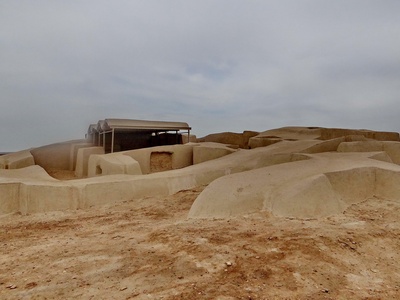
Shahr-e Sukhteh (Burnt City)
A remarkable Bronze Age city-state that was a hub of trade and culture. Discoveries here include the earliest known artificial eyeball, an animated pottery bowl, and evidence of complex metallurgy and social organization.
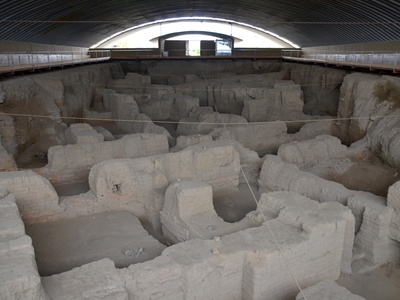
Ecbatana (Hegmataneh)
The ancient capital of the Medes, later a summer residence for Achaemenid kings. Excavations have revealed city walls and urban structures, offering a glimpse into one of Iran’s most historically significant ancient cities.
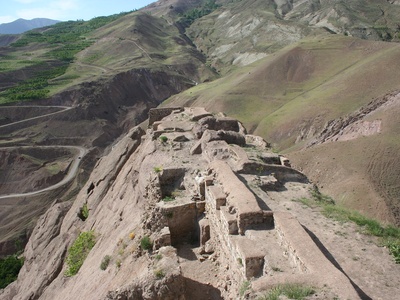
Alamut Castle
The legendary fortress of the Hashshashin (Assassins). Perched dramatically on a mountain, only foundations remain, but the breathtaking views and history of Hassan-i Sabbah make the challenging climb a memorable adventure.
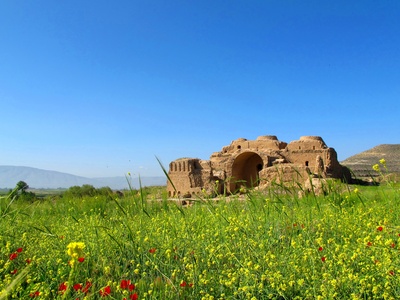
Palace of Ardashir
A fortified palace built by Ardashir I, founder of the Sassanian Empire. Its grand domes and arches, built with local stone and mortar, are early, magnificent examples of Sassanian architectural innovation.
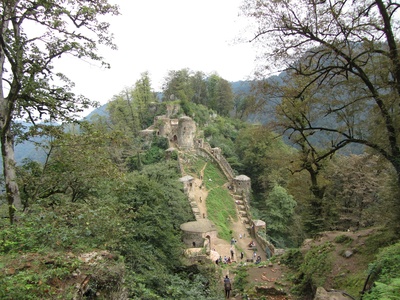
Rudkhan Castle
A stunning medieval military fortress stretching along a mountain ridge. With over 1,500 stone steps to reach it, the castle’s intact walls and towers emerge from the forest mist, creating an unforgettable, fairytale-like scene.
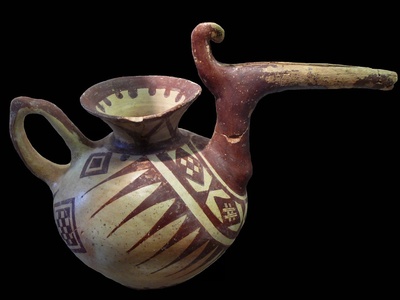
Tepe Sialk
One of the world’s oldest ziggurats is found at this ancient archaeological site. The mounds reveal layers of civilization from the Neolithic era, showing the development of pottery, metallurgy, and urban living.
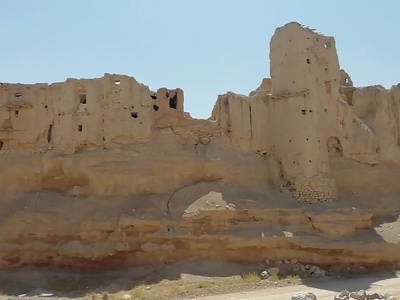
Izadkhast Castle
A remarkable historical complex featuring a fortified town built on a singular bedrock, an old caravanserai, and a Safavid-era bridge. The tightly packed, multi-storied mud-brick houses of the abandoned town are breathtaking.
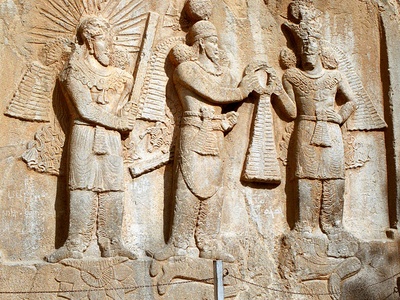
Taq-e Bostan
A series of magnificent Sassanian rock reliefs, including a large grotto depicting the investiture of Ardashir II and Khosrow II. The detailed carvings of royal hunts and ceremonies are masterpieces of Sassanian art.
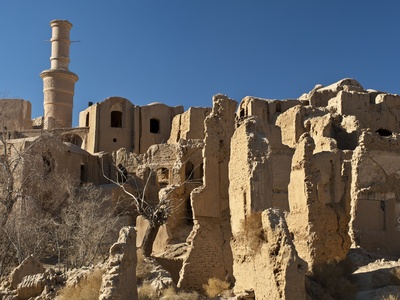
Kharanaq
A captivating, multi-story mud-brick village that was inhabited for over 1,000 years before being abandoned. Visitors can wander its labyrinthine alleys, tunnels, and crumbling houses, exploring a perfectly preserved ghost town.
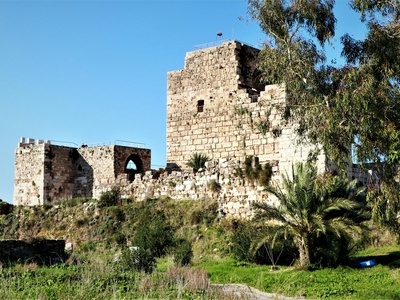
Narin Castle, Meybod
A massive pre-Islamic citadel that looms over the desert city of Meybod. Built with adobe and mud-brick, its commanding ruins, with their layered fortifications, offer panoramic views and a journey through millennia of history.
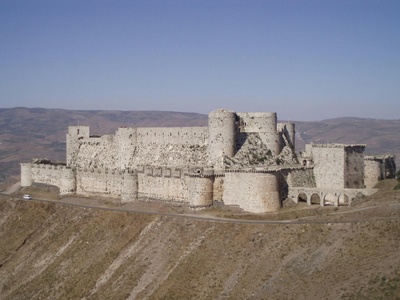
Qal’eh Dokhtar (The Maiden’s Castle)
A formidable fortress built by Ardashir I even before he became king. Perched on a mountain pass, its strategic location and robust construction demonstrate the military engineering that helped establish the Sassanian Empire.
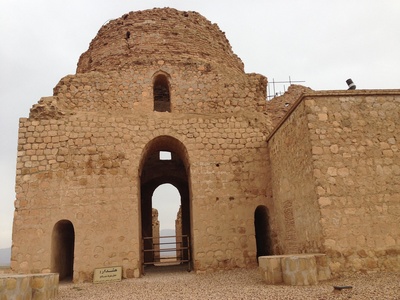
Sarvestan Palace
A mysterious Sassanian-era building, possibly a royal residence or a Zoroastrian fire temple. Its advanced architecture, featuring multiple domes and vaults, is considered a key link between Parthian and Islamic designs.
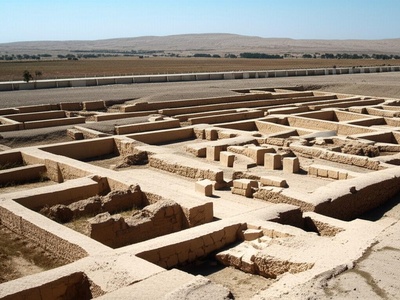
Haft Tepeh
An important Elamite religious and political center. The site’s most significant feature is the large tomb complex of King Tepti-Ahar. Excavations have unearthed administrative buildings and thousands of cuneiform tablets.
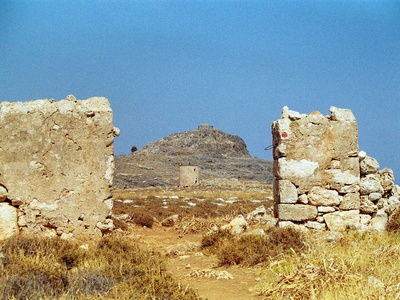
Shahr-e Qumis (Hecatompylos)
The ruins of one of the early capitals of the Parthian Empire. Today, the site consists of several low mounds scattered across the desert plain, marking the locations of palaces, temples, and fortifications from this powerful empire.
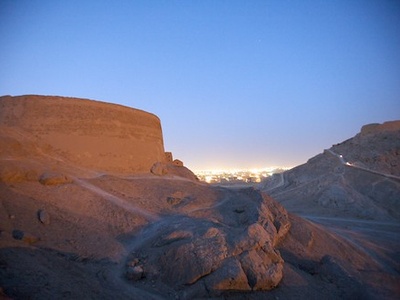
Towers of Silence, Yazd
These two circular, hilltop structures are traditional Zoroastrian Dakhmas. Here, the bodies of the deceased were left to be cleansed by the elements and vultures. Though no longer in use, they offer insight into ancient rituals.
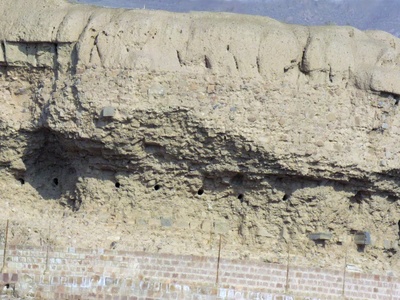
Rab’-e Rashidi
The ruins of a vast and ambitious university complex built by the Ilkhanid vizier Rashid-al-Din. It included paper mills, a library, and hospitals, and attracted scholars from all over the world before its destruction.
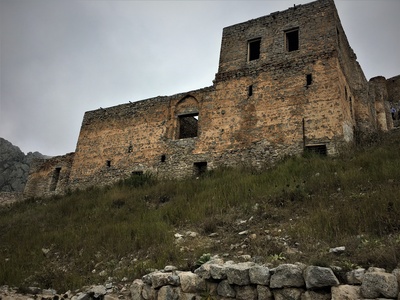
Babak Castle
A dramatic and isolated fortress, the legendary stronghold of Babak Khorramdin, who led a rebellion against the Abbasid Caliphate. Reaching the sparse ruins requires a difficult trek, but the panoramic views are unparalleled.
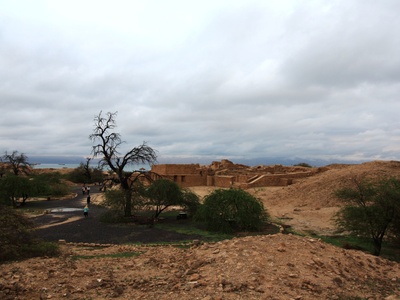
Harireh Ancient City
The ruins of a once-prosperous port city on Kish Island in the Persian Gulf. Excavations show a well-planned city with stone and coral houses, revealing its importance in maritime trade during the medieval period.
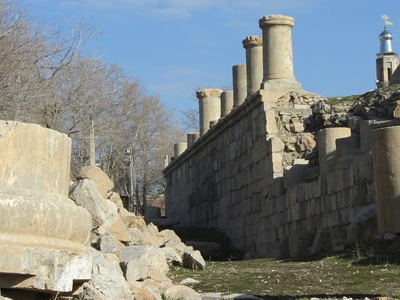
Temple of Anahita, Kangavar
The imposing ruins of a grand structure, believed to be a temple dedicated to the goddess Anahita. Built on a massive stone platform, the remaining column bases hint at a structure that once rivaled classical Greek temples.
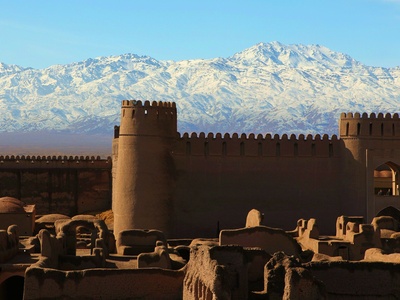
Rayen Castle
A magnificent and well-preserved adobe citadel that mirrors the famous Bam Citadel in its design. Its intact residential quarters, governor’s mansion, and fortress walls offer a fantastic look at the structure of a desert fortress-city.
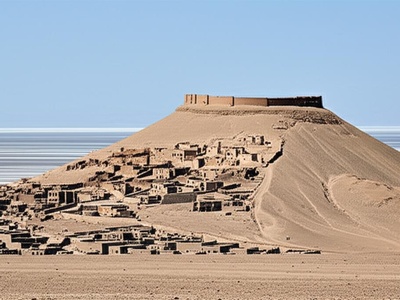
Kuh-e Khwajeh
A basalt hill rising from the Hamun Lake, holding a citadel with ruins of a fire temple, palace, and houses. Known as a Ghaga-Shahr, this site contains Zoroastrian, Buddhist, and Christian art, reflecting its diverse history.
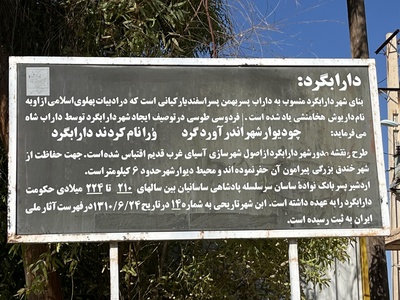
Darabgerd
One of the oldest circular cities in Iran, founded by Ardashir I. The city is defined by its enormous, perfectly circular defensive walls made of rammed earth. At its center stands a massive, eroded rock structure.
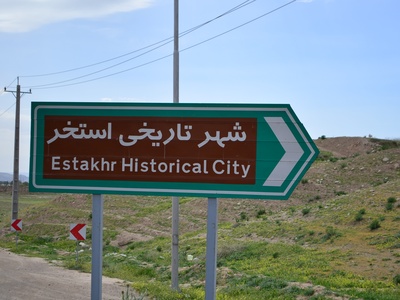
Estakhr
An important ancient city that served as a capital during the Sassanian period. Located near Persepolis, its ruins are extensive but subtle, with visible foundations, a city gate, and column fragments scattered across the plain.
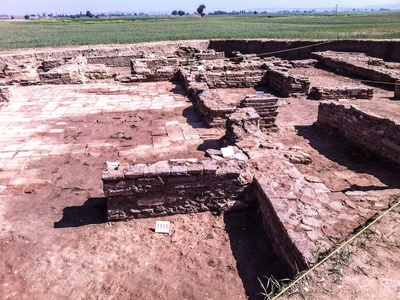
Jundi-Shapur
The ruins of a famous Sassanian city that was home to the world’s first teaching hospital and a major center for science and philosophy. While little remains standing, the site’s historical importance is immense.
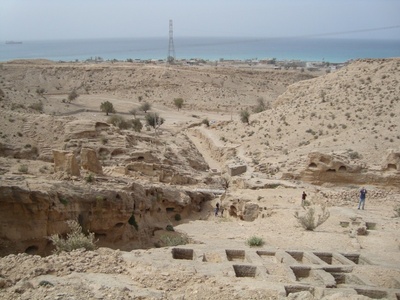
Siraf
The ruins of a legendary Persian Gulf trading port that flourished for centuries. The site includes the remains of congregational mosques, opulent houses, and rock-cut tombs overlooking the sea, attesting to its former wealth.
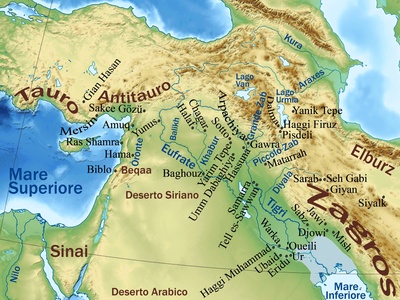
Godin Tepe
A significant archaeological mound where researchers found the earliest evidence of wine and beer making. The stratified layers show a long history of occupation, from early settlements to a Median-era fortress.
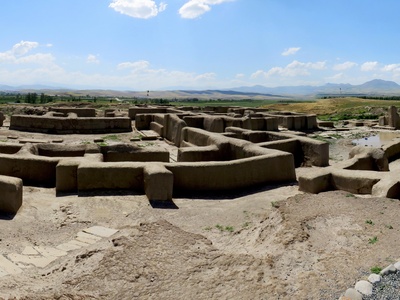
Hasanlu Tepe
The site of a major Iron Age settlement that was violently destroyed around 800 BCE. The most famous find is the golden “Hasanlu Bowl,” and the poignant remains of the “Hasanlu Lovers” embracing in death.
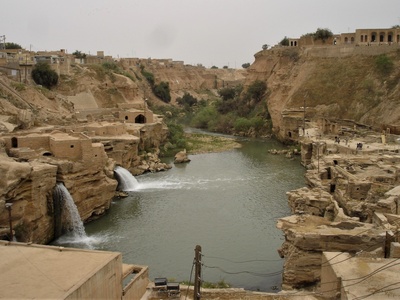
Shushtar Historical Hydraulic System
A remarkable feat of ancient engineering, this interconnected system harnessed river power for water mills and irrigation. The dramatic cascades of water flowing through the ruined mills create a spectacular and unique historical landscape.
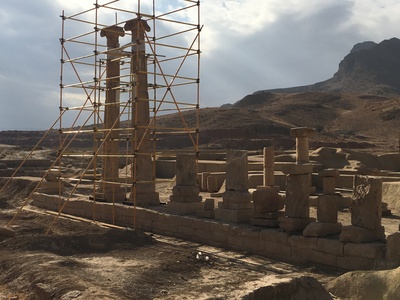
Khorheh Temple
The enigmatic ruins of what was likely a temple or a grand villa. Only two towering Ionic columns and some foundations remain, standing starkly in a rural landscape, a mysterious remnant of Iran’s Hellenistic period.
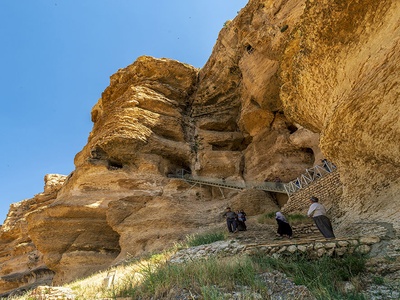
Karaftu Caves
A series of natural caves modified for settlement and worship. One chamber, known as the Temple of Heracles, contains a Greek inscription, highlighting the cultural fusion that occurred along the ancient Silk Road.

Iraj Castle
One of the largest ancient military fortresses in the world. Its massive, rectangular defensive walls, now eroded but still immense, enclose a vast, empty space, showcasing the incredible scale of Sassanian military construction.
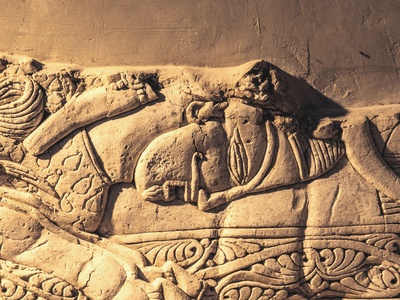
Bandian Fire Temple
An amazing discovery, this Sassanian fire temple’s main hall is decorated with some of the best-preserved stucco reliefs from the period. The detailed panels depict hunting scenes, investitures, and Zoroastrian symbolism.
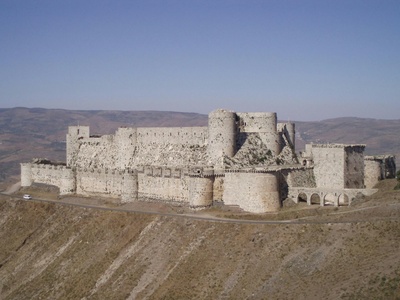
Zahhak Castle
A mysterious and remote fortress, possibly dating back to the Parthian era. Its stone and brick ruins are set in a dramatic landscape, with chambers and halls built into the rock, associated with the mythical tyrant Zahhak.
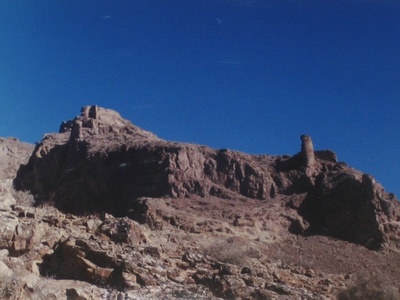
Lambsar Castle
One of the largest and most formidable of the Nizari Ismaili (Assassin) castles. Its sprawling ruins cover a long, narrow mountain ridge, demonstrating sophisticated water storage systems and defensive architecture.
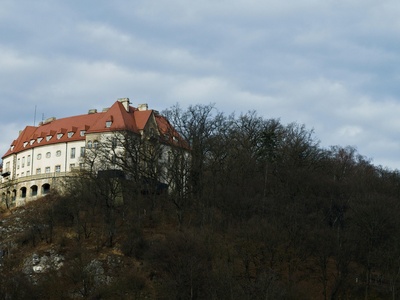
Gerdkooh Castle
Another key Ismaili fortress, perched on a conical peak that gives it its name, “Round Mountain.” Known for withstanding a long Mongol siege, its ruins are a testament to the strategic genius of its builders.
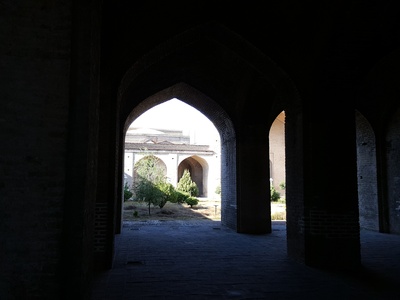
Farahabad Complex
The remains of a Caspian seaside resort city built by Shah Abbas I. The ruined mosque, palace foundations, and an old stone bridge are what’s left of this once-thriving complex, a “second Isfahan” in the north.
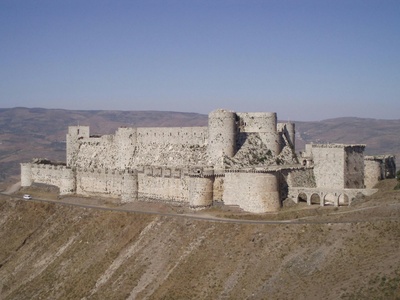
Sirvan (Ancient City)
The vast, unexcavated ruins of a major Sassanian city, believed to be “Madaktu.” The sheer scale of the site, with its visible building foundations and pottery shards, points to a significant urban center yet to be fully uncovered.
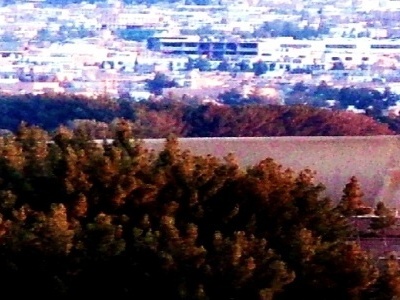
Ghal’eh Paeen Shahr, Birjand
The oldest and largest historical structure in Birjand, this massive mud-brick citadel once formed the core of the city. Though heavily eroded, its scale and remaining walls are an impressive sight within the modern urban landscape.
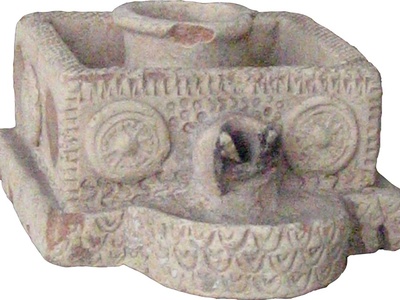
Bard-e Neshandeh
An open-air religious sanctuary used for centuries. The site consists of a stone terrace with the remains of altars, small temples, and numerous statues and reliefs dedicated by local Elymais rulers, now mostly in museums.

